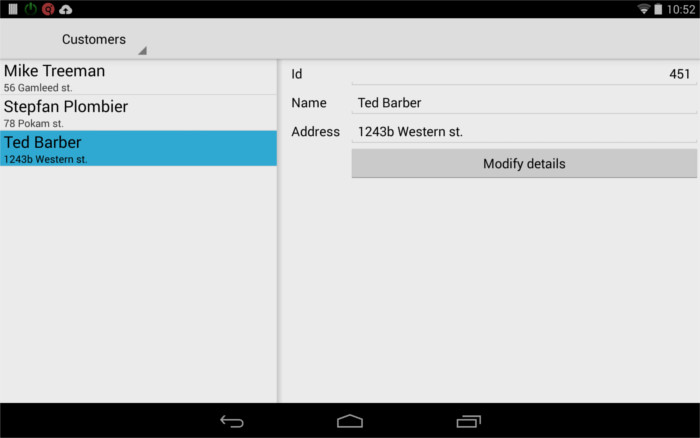Understanding split views
Split views refer to the ability to access two forms side by side on a mobile device. This feature is mainly provided for tablet devices, as most phones can only display one window/form at a time.
A split view is composed of a "left pane" and "right pane". In programs, the panes are implemented with window objects displaying forms, which are controlled by parallel dialogs.
Figure: Form with Split View (Android™)

Split views (controlled by parallel dialogs) are typically used to browse the application data, while modal dialogs are used for data input in a single form. An application based on split views will start with parallel dialogs, and switch to a simple modal dialog when the user chooses to edit application data. Parallel dialog handling is suspended by the runtime system, when a modal dialog executes. For details about parallel dialogs compared to modal dialogs, see What are dialog controllers?.
If the application displays several split views simultaneously, implement a navigator pane, to let the end user switch between the different split views.